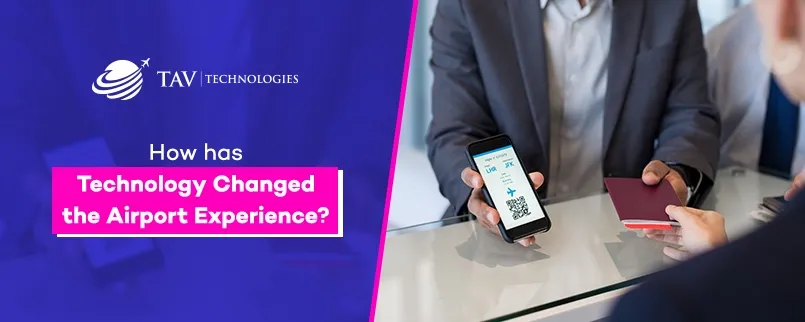
Feb 2023
Have you ever considered how different air travel would be if airport technology did not exist? It is hard to imagine, right? Air travel has come a long way from the days of standing in long lines and relying on printed schedules for flight information. Thanks to advancements in technology, airports have been able to simplify processes, enhance customer service, increase safety and security, and offer a range of entertaining amenities to make the airport experience more enjoyable.
Enhancing customer service and satisfaction through technology
Checking in for a flight used to be a time-consuming process that involved standing in long lines and speaking with a representative at the airport. Now, with online check-in options and self-service kiosks allowing passengers to print boarding passes, purchase tickets, and check their baggage, it is quick and easy. Self-passport control technologies are another convenience that airports have started adopting, which allows travelers to scan their passports and complete customs & immigration procedures at a kiosk, saving time and reducing wait times at immigration.
Technology has transformed airport operators’ work processes with improved customer service and reduced wait times & chances of errors, which lead to increased customer satisfaction, translating into more repeat business and higher revenues. By using technology to automate tasks, airports can save time and money, which can then be used to invest in other areas that drive revenue.
The Convenience of Online Flight Information and Mobile App Services
In the past, travelers had to rely on printed schedules or ask airport staff for flight information. Now, flight information is accessible online or through airport screens. Airports’ websites or mobile apps are available for passengers to check their flight status, see any delays or gate changes and get real-time updates on their flights.
Mobile app services’ capabilities do not end here. It is also possible to order food and drinks for the pickup via the latest technology mobile apps. Those apps have made the food ordering processes at airports faster, easier, more efficient, and personalized for both passengers and retailers.
Increasing safety and security with advanced technologies
Security is a vital aspect of air travel, and technology has made it easier to keep travelers safe. X-ray scanners and metal detectors are some examples of advanced security technologies that allow security personnel to screen passengers and their belongings more thoroughly and efficiently. This helps to keep the airport safe and secure while also speeding up the security process. Fast security procedures lead to happier and more satisfied passengers.
Airports benefit from security technologies to monitor and secure the airport perimeter and grounds. Surveillance cameras and sensors can detect and track suspicious activity, while access control systems ensure that only authorized personnel are allowed into restricted areas.
Maximizing airport revenues through technology and customer-focused strategies
Another key area where technology improves the airports’ overall performances is offering airport resource management systems designed to optimize the use of limited resources at airports and reduce costs, improving efficiency. These systems can be used to track and manage aircrafts, ground support equipments, and other resources, as well as to schedule maintenance and repairs. They can also be used to optimize the use of terminal gates and manage traffic flow, helping to reduce delays and improve the efficiency and effectiveness of operations. It does not end here. By using data analytics, airports can better understand their customers and the services they value most. This can help them to tailor their offerings and pricing strategies to maximize revenues.
Elevating the airport experience with technology-driven entertainment options
Spending time at airports used to be a tedious and often unpleasant experience with limited entertainment options. However, thanks to technological advancements, airports have become much more enjoyable places. Airports have introduced a variety of amenities and entertainment options to keep travelers occupied while they wait for their flights. Some airports are now using virtual reality technology to help travelers relax. With a VR headset, passengers can take a virtual tour of a distant location, play a game, or watch a movie while they wait for their flight.
In conclusion, technology has greatly enhanced airport operations by streamlining processes. From online check-ins to mobile app services, technology has made travel more efficient, fast, safe, convenient, and enjoyable for passengers. It also helped airports to maximize their limited resources, generate various revenue channels and increase their profits.
